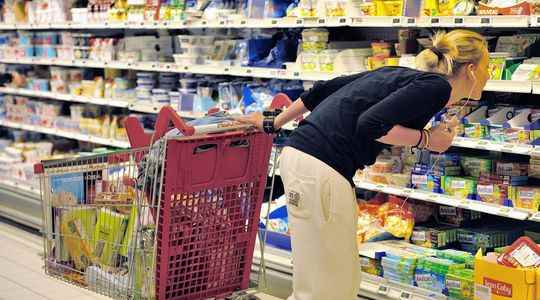In recent weeks, rising oil and gas prices have often been highlighted. However, the price of cereals, already at its highest before the invasion of Ukraine by the Russian army, should also know other variations because of the war. Russia is the world’s largest wheat exporter. Ukraine is the fifth; the fourth concerns maize.
The conflict has a double consequence on the transport and trade of these agricultural materials. On the Ukrainian side, cargoes are blocked in the ports of the Sea of Azov and the Black Sea, Odessa or Mariupol, the latter currently being the scene of bitter fighting. On the Russian side, European sanctions are affecting the capacity to transport these foodstuffs.
No shortage but price increases
“There is no shortage of wheat in the world, but there is a logistical problem (…) There is no longer a boat sailing on the Black Sea”, explained Friday on franceinfo Michel Portier, director of Agritel, an analysis and consulting firm specializing in agricultural and agro-industrial markets. If, like him, many experts do not predict a shortage – France is also a major cereal producer – they expect price increases. That of certain foods will flare up “because of a lack of short-term availability”, added Michel Portier. Especially since, at the same time, the annual negotiations between French manufacturers and distributors ended on March 1 with a price increase of 3 to 4%. A first since 2014.
Wheat, whose prices reached 381.75 euros per ton on the evening of Thursday March 3 for the March deadlines, is essential for many products in our diet. Like bread. But according to the director of Agritel, an increase in the ton of wheat should have “a relatively small impact on the price of bread. You should know that the price of flour represents a maximum of 10% of the final price of the baguette”. What is more worrying: a conjunction between an increase in wheat and other materials, for example corn or oilseeds (sunflower, rapeseed, soy…). Ukraine alone exports 50% of the world sunflower oil market. Above all, in addition to the development of products that are consumed directly, these materials are essential in the feeding of farm animals. It is one, if not the main expense of breeders for their production.
Fertilizers and animal feed
Another problem for the agricultural sector: the supply of fertilizers. According to the national establishment of agricultural and marine products (FranceAgriMer), Russia “represents 24% of world exports of ammonia” and “40% of world exports of ammonium nitrate”, main substances synthetic fertilizers. And to make these fertilizers, you need gas. The rise in energy prices automatically lengthened the note. Before the Russian invasion in Ukraine, the National Association of Food Industries (Ania) already noted, in his February guess notethat “the prices of raw materials as a whole have never been so high for more than 10 years”.
So many elements that make Christiane Lambert, the president of the FNSEA, say on this last day of the International Agricultural Show, “that there will certainly be no shortage, but there will be price increases. certainly.” “Fertilizers increased by 138% last year and will continue, fuels increased by 55%, livestock feed by 20%: all this contributes to significant increases in costs for farmers” , she said on franceinfo this Sunday. And therefore extra cents for consumers who buy products from livestock: milk, eggs, cream, butter, meat…
The phenomenon is not uniquely French. On Friday, the Food and Agriculture Organization of the United Nations (FAO) noted a record high in world food prices in February. The FAO index, which tracks the monthly change in international prices for a basket of basic food products, rose by 3.9% compared to January (140.7 against 135.7 points). The previous record dated back to February 2011 (137.6 points). The international organization attributes this increase largely to the “price of vegetable oils” (up 8.5% compared to last month) and “mainly due to the rise in the prices of palm, soy and sunflower oils” . This is an already palpable collateral effect of the war in Ukraine.
